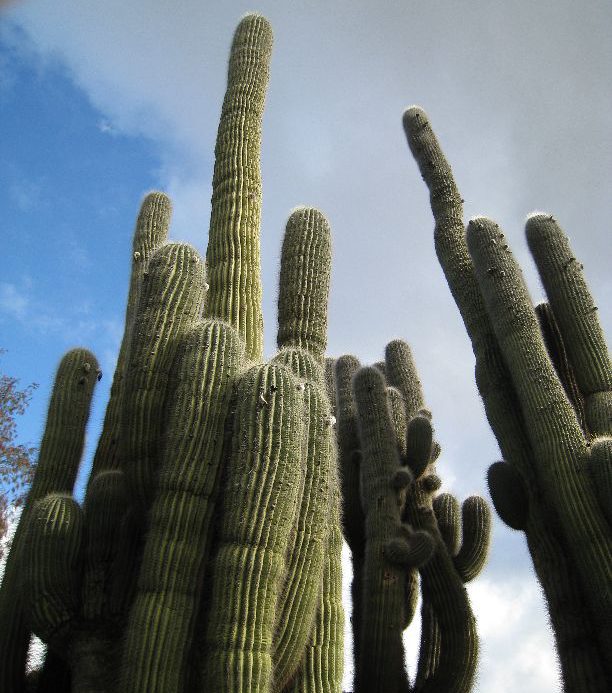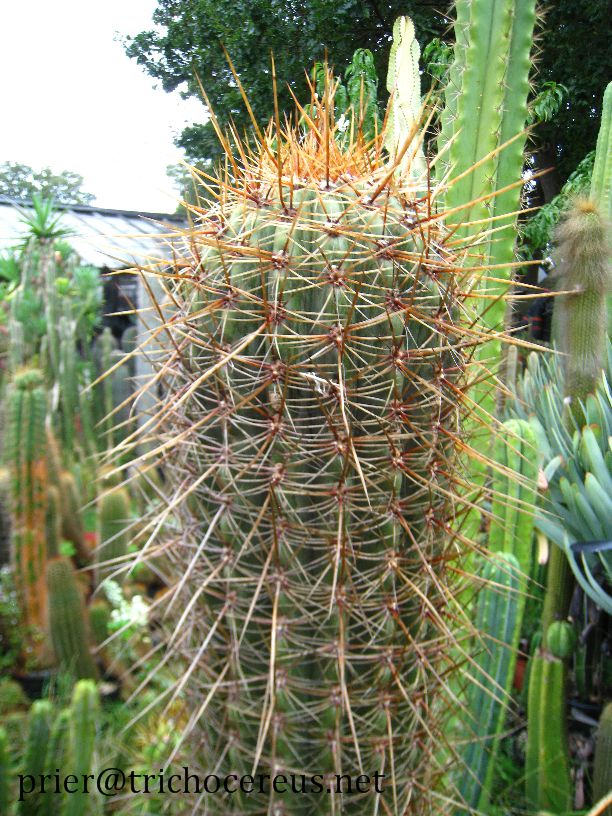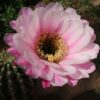
Trichocereus pascana, also known as Echinopsis atacamensis ssp.pasacana, is a columnar cactus that can be found growing throughout the Andes.
Synonyms of Trichocereus pasacana:
Helianthocereus pasacana, Cereus pasacana, Pilosocereus pasacana, Echinopsis atacamensis, Echinopsis rivierii, , Echinopsis formosima, Trichocereus atacamensis ssp.pasacana, Echinopsis pasacana
Description:
Trichocereus pasacana is a tree-like cactus that gets up to 10 meters tall though the average height is usually a lot less. It can reach a diameter of 30-45 centimeters and has between 18-22 ribs. It has a lot of small, needle-like spines that can get up to 10-15 centimeters in length. The mature form looks a lot different to its early appearance. The spines are yellow in color and their length is decreasing during the life cycle of the plant. Old plants tend to have lesser spines that young ones and the early spine form is a lot stronger that the adult form.
Flower:
The flower is white. 10-15 centimeters long. The flower has hairs on most parts and covered with a dark brown wool.
Fruit:
Round, up to 3 centimeters large.
Origin:
Argentina, Catamarca, Jujuy, Tucuman, Salta and some parts of Bolivia.
There are different varieties of this plant and some tend to branch more than the others that grow like trees. The overall appearance of this plant is extremely variable and there are many intermediate tips between Trichocereus Pasacana, Trichocereus Terscheckii and Trichocereus Atacamensis. Because of that, most descriptions only cover certain varieties of this plant.
Close genetic proximity to other species
Trichocereus Pasacana is 0ne of those plants that are making it hard to draw the line. Backeberg considered this plant to belong into his own described Genus “HELIANTHOCEREUS” which divided the Day flowering from the Night flowering Plants but that was not accepted and reversed very soon after. The new taxonomic name of Trichocereus Pasacana is Echinopsis Atacamensis ssp. Pasacana, though I think Hunt decided to re-position the whole thing in Trichocereus. No matter what, it´s a remarkable plant that is extremely impressive. And the differences between Trichocereus Pasacana and Trichocereus Atacamensis are so minor that it is very likely that Pasacana is just a Variety of Trichocereus Atacamensis, which has priority. The difference between both types is that Trichocereus Pasacana tends to grow branched, while Trichocereus Atacamensis grows more like a tree. Trichocereus Pasacana is also called Cardon Grande, because of its large and mindblowing appearance!
Cultivation:
Trichocereus Pasacana is a slow growing Tricho that should not be watered too much. It likes a little water every now and then in summer, but only when it´s actively growing. They should not be watered when it´s cold or rainy. Trichocereus Pasacana makes an extremely beautiful gardne plant but can get really big, so it´s actually only probable to grow them in a greenhouse that is heated all year long or in countries where they can grow outside. They usually produce very large root balls and if you grow them in a pot, it will get really heavy very soon.
Frost Tolerance Trichocereus pasacana:
The most important factor that influences frost tolerance is the wetness of the soil. Trichocereus Pasacana can tolerate very low temperatures for short periods of time. -5° celsius should be the limit though because low temperatures can cause the plant to rot. The minimum average temperature is around 10° celsius/50° Fahrenheit. It may even be possible for them to survive short night frosts lower than -5° celsius but I would absolutely not recommend it because it can leave permanent damage that doesn´t immediately show. But again, the plants HAVE to be dry over winter, no matter what. Personally, I don’t grow those Trichos in Europe because they just tend to get so massive that its hard to carry the pot.
Growing Trichocereus pasacana from seed:
Trichocereus Pasacana is very easy from seed and requires the same treatment as Trichocereus Terscheckii. It helps to allow the seeds to cool down during the night to increase germination rates. But the minimum temperature required to germinate them is between 25° and 29° celsius. The seedlings don’t need that much water and can germinate with very little. The nutrients stored in the seed corn will allow the seedlings to grow a couple of months without fertilizer. But after then, you should fertilize them with a very weak fertilizer solution. VERY WEAK is the important word, or they might die because of fertilizer burns, which looks similar to sunburn.
Live plant & seed sources:
Most seeds on the market have a crappy quality and there are very little professionals who sell this type of seed. The fact that those plants have to reach a very large size before they flower leads to very little growers giving away some seeds. But every now and then, private growers in our Trichocereus Group give away some seed. Apart from that, you can get live cuttings on various places, including Ebay, Amazon and online nurseries. Often times, cuttings sold as Trichocereus Pasacana are actually Trichocereus Terscheckii, which is caused by their similarity at a young age. There are very little differences you can keep them apart.
Trichocereus pasacana for sale
Trichocereus pasacana is rarely for sale, but you can sometimes get lucky by obtaining a cutting from fellow growers who cut back their gigantic mother plants. If you want to buy a Trichocereus pasacana, you usually get very small plants and seedlings that will take many years to get tall. A large Trichocereus pasacana mother plant can cost 1000 bucks and more if you buy it from a professional landscaper.
This is an adult type that rarely branches, Pic: Prier
This is a very typical, juvenile form! Pic: Prier
Pic: Tangopaso
Nice pic of an adult form, including flowers and fruits. Pic: Mourial
Very few spines on this mature form, Pic: Toth 1
Trichocereus Pasacana is also used as fencing. Or, as Doors. Pic: Mourial
Pic: Thanks to Prier for these amazing pics!







Check out our main plant database pages for Trichocereus pachanoi aka Echinopsis pachanoi here:
And Trichocereus bridgesii here:
Trichocereus scopulicola
Also check out our Trichocereus Facebook group here:













